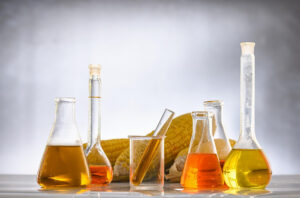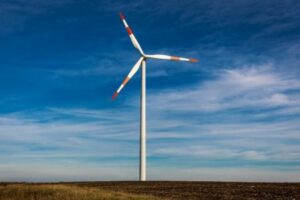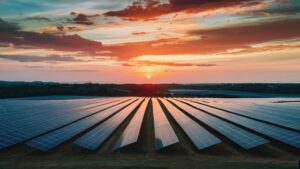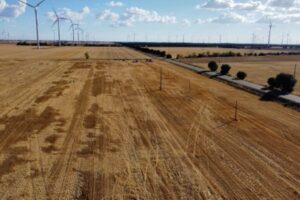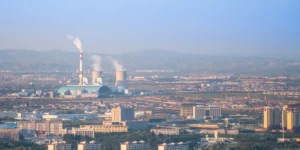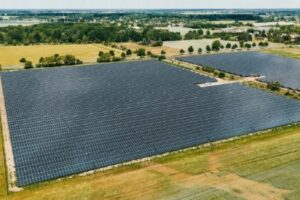Examples of Biomass Energy

Biomass is esential for mankind because for thousands of years, this natural resource represented the main source of energy for our civilization.
In the twentieth century, fossil fuels such as oil, coal and natural gas have made our life easier, but at the same time the environment was seriously affected.
Today, we have finally understood that fossil fuels do not represent a viable solution for the future, and we are trying to return to the main forms of clean power available on the planet, which are provided by the sun and biomass.
What is Biomass?
All organic material obtained from plants and animals is considered biomass, and consists of wood, crops, animal waste, organic garbage, human waste, etc.
Biomass is a renewable energy source because it is produced continuously on the planet, and it will work as long as there is life on the planet.
What is Biomass Energy?
Is the energy obtained through direct combustion of biomass materials such as wood, energy crops, human and animal waste, and through anaerobic processes, where biomass is obtained through a fermentation process (sugar and glucose is used to produce biofuels such as ethanol).
Through direct combustion, biomass like wood, energy crops, animal waste and organic garbage is burned into furnaces to generate hot gases which are used for residential and industrial heating, but also to produce steam that will spin a turbine to generate electricity using a generator.
This way, mechanical energy is turned into electrical energy, which then can be turned into light energy, heat energy, kinetic energy, potential energy, etc.
Examples of Biomass Energy
Energy from biomass is produced using plant and animal-based materials such as wood, energy crops, human and animal waste and organic trash.
1. Wood
Wood and wood waste is considered the main source of biomass energy today and consists of forest residues such as dead trees and branches, tree stumps, yard clipping and municipal solid waste.
Wood energy is produced by burning lignocellulosic biomass because the harvested wood can be used directly as fuel for heating and cooking or for electricity generation.
Streams of wood waste are processed to produce pellet fuel and other forms of wood-based fuels.
The pulp of the wood is used to produce pulping liquor, which is an industrial product obtained after processing the wood pulp and used in the industry for delignification of both hardtwoods and softwoods.
Forest Residues
Every forest produces a good amount of wood waste due to the dead trees, branches and tops that are cut for biomass.
The branches and tops are used as fuel in cogeneration plants to produce heating and electricity and in the future also as vehicle fuel.
Branches and tops are primarly extracted during regeneration harvesting and this is done entirely through the use of machinery.
Regeneration harvesting produces a good quantity of branches and tops every day, and also timber and pulp wood.
From the forest, the timber and the pulp wood is transported directly to sawmills and pulp mills, while the branches and tops remain in the harvested area for a summer to dry.
The piles of branches and tops are covered for drying, and they wait in the forest for a few months before being turned into chips.
During the fall, the branches and tops are turned into chips using chippers fitted with a forwarder.
Once produced, the wood chips are emptied into large truck containers and transported to thermal power stations where they are weight and the moisture level is measured. Once this operation is completed, the chips are emptied into the fuel storage facility of the power station and used sooner or later for heating and electricity generation.
Tree Stumps
After regeneration harvesting, a large number of tree stumps remain in the forest.
Using proper machinery that can easily harvest tree stumps, we have another source of wood waste that can be used as fuel for residential heating and also for power generation.
Yard Clipping
Yard waste is mostly produced in the spring and fall because that is the moment when people are getting out to clean out the garden (pruning, cutting unwanted branches, gatehring leaves).
All the yard waste is put in a paper bags and transported to a facility where is mixed with organic waste from kitchens (food leftovers).
Some of the yard waste is mixed with organic waste, and after that is dried out and heated to kill all the bacteria.
The process that takes about 42 days and turns yard waste and organic waste into a useful dirt (compost), which goes back in the farmer’s field to produce more food.
That food is consumed and becomes organic waste again, and the entire process starts over again and again.
Wood Chips
Wood chips are produced when logs are turned into timber in sawmills, but there are facilities specialized in the production of quality wood chip obtained from timber harvested in a sustainable and renewable way.
Timber is seasoned prior to chipping, and the wood chip produced is kept dry under a cover.
Chips quality is verified before delivery and is used as fuel for heating in large facilities such as center parcs, airports, stadiums, etc.
2. Energy Crops
There are two types of energy crops: food crops and nonfood crops.
Being cultivated plants, energy crops grow faster compared to other crops, require a small amount of water over the year and represent a great resource for biomass energy production.
Food crops
Food crops consisting of corn, sugarcane, oilseed rape and others, are expensive because their main purpose is to produce food not energy (biofuels).
With a rising population on the planet, food crops will no longer be used for energy production, because the resource used by biomass for power, biofuels and residential heating production will consist only of nonfood crops.
Nonfood crops
Nonfood crops consist of switch grass, willow, poplar, etc.
Being used only for biomass energy production and not for food, nonfood crops represent the future in terms of energy crops for biofuels, heating and power production.
Biofuels
Energy crops, both food and nonfood are used today for the production of biofuels such as bioethanol and biodiesel.
Bioethanol is produced from sugarcane and corn and the resulting biofuel is mixed with gasoline and used in cars with internal combustion engines.
Biodiesel is produced from vegetable oil (seeds like oilseed rape), and can be used in vehicles with diesel engines.
Biogas is produced from animal and human waste, but also from energy crops, which are heated and agitated in large digesters to ferment and release biogas.
Biogas consists mostly of methane gas and is used as domestic fuel or fuel for electricity generation in power plants.
Solid biofuels (pellets) are produced from the residue of energy crops (nonfood crops), and are mainly used for residential and industrial heating, and also for electricity generation.
3. Animal and Human Waste
Animal and human waste is mostly produced in the major towns where a large number of people occupy a small area of land.
When you flush the toilet the water and all the organic matter produced goes to the sewage and from there is sent to a sewage treatment plant.
Once arrived there, all the human and animal waste is separated from the water and used to produce compost.
The water is cleaned and spilled in the closesc river, but the soild organic waste is used in very large digesters to produce biogas, and compost.
That compost will end up on your land to produce food, which will be consumed by people and animals and will become organic waste again.
4. Municipal Solid Waste
Municipal solid waste (MSW) consists of materials that can be recycled (plastic, glass and metals), and solid waste such as paper, wood residue and other materials that can be used as fuel in waste-to-energy power plants.
After removing the recyclable materials and the organic waste, the remaining trash will be burned in waste-to-energy power plant to produce electricity.
Biogas is produced by farmers in small digesters (they use kitchen waste, waste paper, grass and animal manure), and because this free and renewable gas burns cleaner than methane is mainly used for cooking.
Is Biomass Carbon Neutral?
Photosynthesis is a biological process and is used by plants to synthetize their own organic matter using atmospheric carbon dioxide CO
The reaction also produces six molecules of oxygen O2.
CO2 is trapped this way in solid form within the organic matter of all plants living on the planet.
When we consume the plant (when we eat it), the energy stored during its life will be used by our body, while if we burn the plant, the energy stored will generate heat and the CO2 trapped will be released into the atmosphere.
Like all living creatures, plants breathe and this respiration process consumes oxygen O2 and sugars and produces CO2 and water H2O.
During the day, photosynthesis compensates the loss of organic matter consumed through breathing during the night.
The growth of the plant occurs only when the amount of organic matter produced through photosynthesis exceeds the amount of organic matter consumed through breathing.
Dead plants that decay in the open air will act like the plants that breathe during the night, with the release of CO2.
The lifecycle of a tree
When the tree is young grows fast and starts gathering carbon in its body because the organic material produced through photosynthesis exceeds the amount of organic matter consumed through breathing.
However, as the tree gets older, breathing starts catching up with photosynthesis, and this way carbon storage declines.
The tree dies and as decomposes, it starts releasing all the carbon that was stored during its lifetime.
This is the carbon sink, and the source of carbon gathered during the whole life of the tree is equal qith the amounht of carbon released in the decaying process.
The tree lived on the planet without producing more carbon that it was, and without consuming more oxygen than it is.
There is an optimal age when the tree should be harvested and replaced with a sapling, to avoid the moment when the tree gets older and starts consuming more oxygen than carbon.
If the tree is burned instead of being allowed to decay, we have a similar result, but the reaction is much faster.
If the decay of tree takes place in the absence of oxygen (in a swamp), the tree will start releasing methane (CH4), which is a much more potent greenhouse gas than CO2.
In its all lifecycle, the impact on the environment will be much higher because a tree that lives and decays in the absence of oxygen will strat releasing dangerous greenhouse gases.
By playing our part in the ecosystem, we can control the absorbtion of atmospheric CO2, and limit the emission of greenhouse gases.

